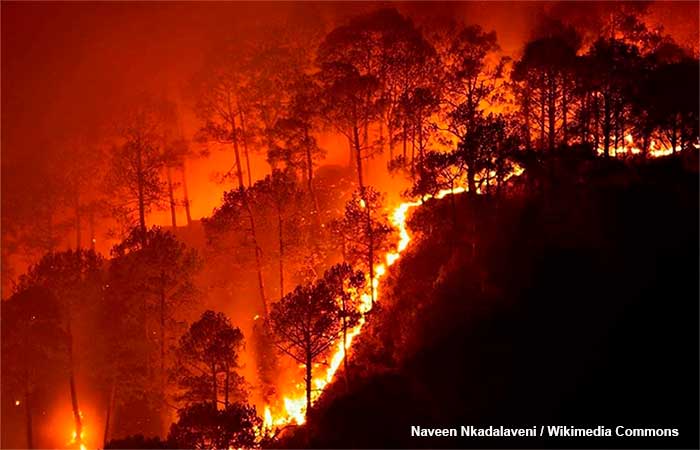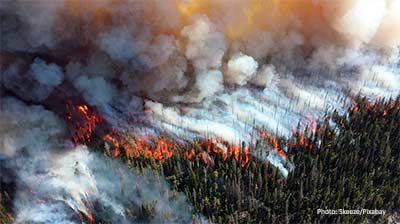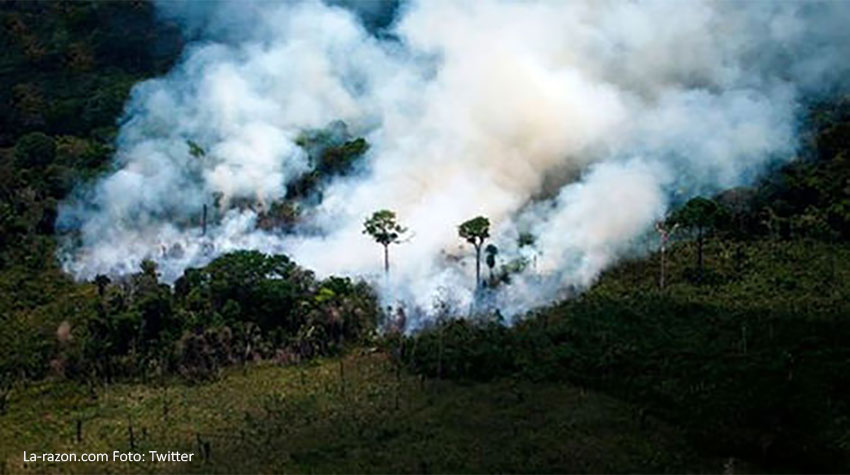FAQs about Wildfires

3. What are the consequences of wildfires?
To establish the consequences of wildfires we have separated them into two categories: those that leave local consequences and those that have global effects.
Local consequences: at the regional level, mega fires have a devastating impact. Among the most visible effects is the destruction of ecosystems, habitats, and urbanizations, with serious damage to flora, death of large numbers of animals and in many cases significant human displacement. Among its damaging effects is also air pollution in places near and far.
On the other hand, the partially damaged plant material becomes a potential fuel that prepares the ground for future fires. Another consequence of these fires is the production of dense smoke emissions, extremely harmful to the health of the local population. In addition, these toxic clouds can travel to areas far from the fires, and in their journey affect numerous populations as they pass.
One of the most serious consequences of fires, by destroying trees, is that the capacity to produce water vapor, rainfall and humidity in the forest and its surrounding areas is reduced. This is the main cause of drought and water shortage. As a consequence, the doors are opened to future fires, in addition to reducing the population’s water reserves.
Among other local consequences we can cite the loss of important forest reserves, destruction of crops, soil degradation or deterioration of the surface cover. The accumulation and dragging of ash cause compaction of the soil, which hinders the normal penetration of water, thus reducing its humidification and therefore the possibility of new plantings.
Global consequences: wildfires release significant amounts of smoke into the atmosphere, which is high in carbon dioxide (CO2). This increases the anthropogenic greenhouse effect and global warming.
Trees have a double function. In the first place, they produce oxygen, essential for the life of most species. Second, they function as carbon sinks, that is, they absorb and store CO2, which is fixed in their roots, trunks, and leaves in form of carbon. Plants, although they take oxygen from the air and re-enter CO2, generate a positive bottom line in terms of the extraction of CO2 from the atmosphere. The CO2 absorption capacity is directly proportional to the size, density and quantity of trees present in a forest. Every tree that is removed in a fire is one less carbon sink. In a mega forest fire, tens of thousands of trees are destroyed. As a consequence, the amount of CO2 in the atmosphere and the heat on the planet increases.
Everything exposed here is serious. If the underlying problem is not addressed, the mega forest fires will have a highly destructive effect, which will involve a further increase in world temperature, water scarcity and the globalization of drought. Deforestation and wildfires can lead to the desertification of the Earth, with crop losses, food shortages, hunger, and global thirst.
FAQs about Wildfires
1. What is a wildfire, and which are the most affected countries?
2. What are the causes of wildfires?
3. What are the consequences of wildfires?
4. Are wildfires a cause or consequence of global warming?
5. What is the relationship between deforestation and forest fires?
6. Why is it difficult to regulate the deforestation of forests?
7. How is biodiversity affected by forest fires?
8. How does smoke from fires affect air pollution?
Other sections of Wildfires
Articles
It is no little that is at stake in the Amazon rainforest. The lung of the world should not be a token in a casino roulette. This biodiversity emporium is about 7 million km2, it is 12 times the size of Spain, it has 80,000 kinds of trees, 140,000 species of plants, 20% of the world’s species. Keep reading…
And you can also see it in…
Infographics

Photo Gallery

Video gallery



